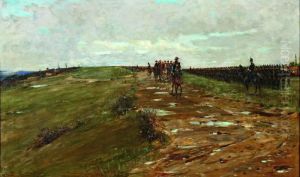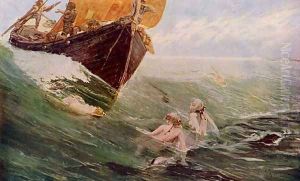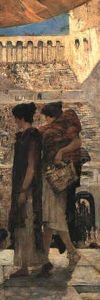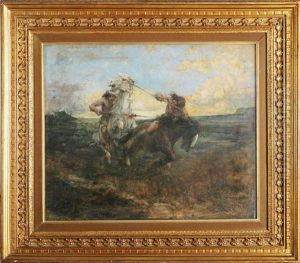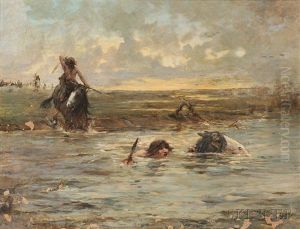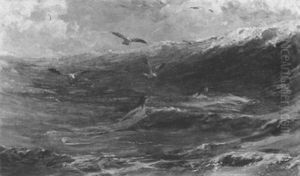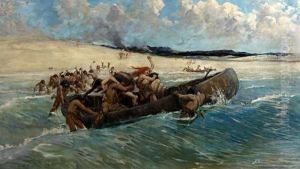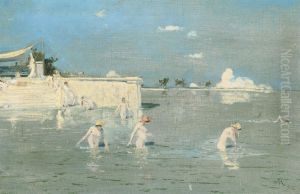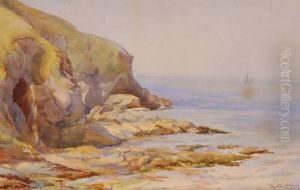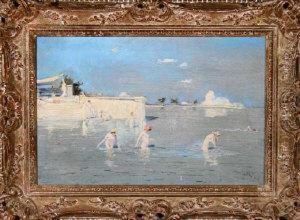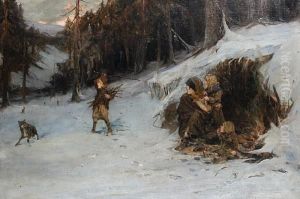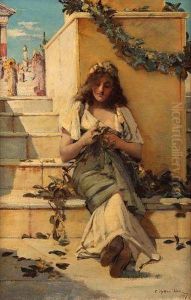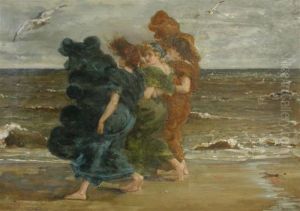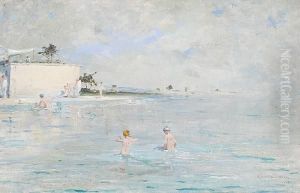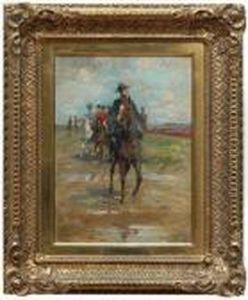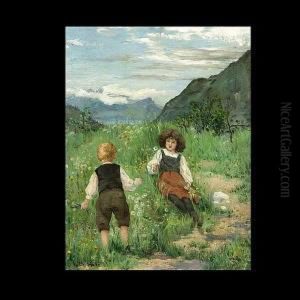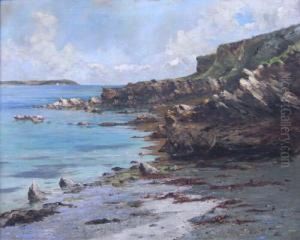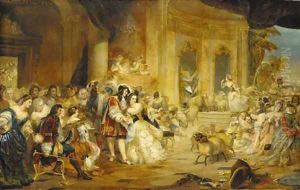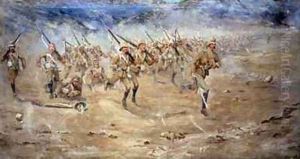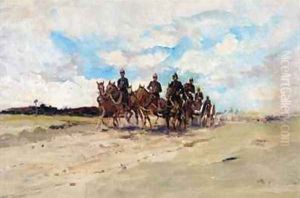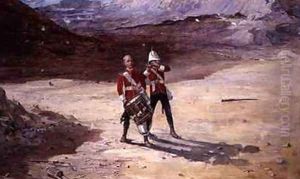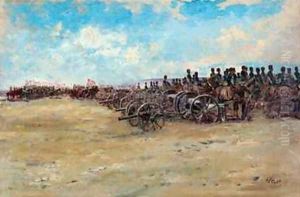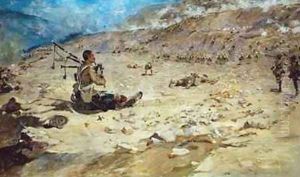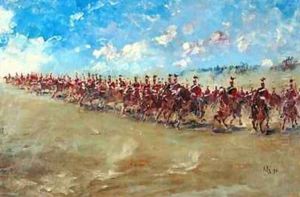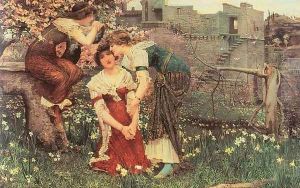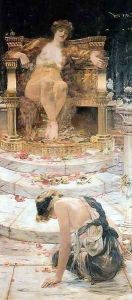Edward Matthew Hale Paintings
Edward Matthew Hale was a British painter known for his beautiful and intricate genre scenes, portraits, and allegorical works. Born on March 18, 1852, in Camden Town, London, he was part of an artistic family; his father, Edward Hale, was a surveyor and his uncle, Benjamin Robert Haydon, was a well-known historical painter.
Hale studied at the Royal Academy Schools where he honed his skills and was heavily influenced by the Pre-Raphaelite movement, which emphasized a return to the detail, color, and complexity of Quattrocento Italian art. Throughout his career, Hale developed a distinctive style that captured the elegance and social nuances of Victorian England.
His early works often depicted scenes from literature and medieval history, characterized by their rich detail and vibrant color palette. Later, Hale focused on contemporary life, portraying the everyday activities of people, especially women, with a romantic and sometimes idealized vision. Some of his notable works include 'A Music Party' (1885) and 'The Lord of Burleigh, Tennyson' (1866), which exhibit his fine brushwork and use of light.
In addition to painting, Hale was also an illustrator, contributing to publications such as 'The Graphic' and 'The Illustrated London News'. His illustrations helped to popularize the narratives they accompanied, making them accessible to a broader audience.
Hale exhibited his work at various institutions, including the Royal Academy of Arts and the British Institution. His paintings were well received in his time, and he was highly regarded by his contemporaries. Despite the changing tastes in art that came with the turn of the century, Hale continued to paint in his traditional style until his death on October 22, 1924, in St. John’s Wood, London.
Throughout his lifetime, Edward Matthew Hale was a respected member of the Victorian artistic community, and his works have been preserved in many art collections, including the Tate Britain and the Royal Academy of Arts. His legacy remains as a testament to the Victorian aesthetic and its cultural milieu.

